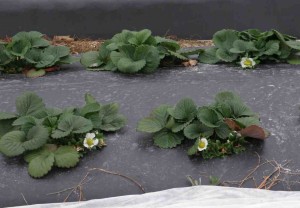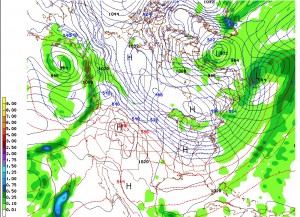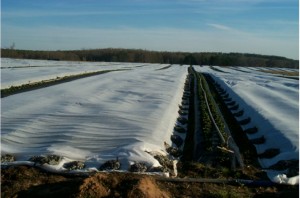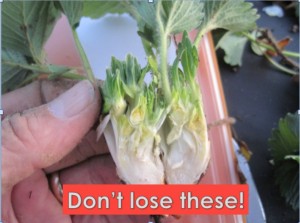Quiz question – when would you have to start irrigating (to be successful)?
go.ncsu.edu/readext?198112
en Español / em Português
El inglés es el idioma de control de esta página. En la medida en que haya algún conflicto entre la traducción al inglés y la traducción, el inglés prevalece.
Al hacer clic en el enlace de traducción se activa un servicio de traducción gratuito para convertir la página al español. Al igual que con cualquier traducción por Internet, la conversión no es sensible al contexto y puede que no traduzca el texto en su significado original. NC State Extension no garantiza la exactitud del texto traducido. Por favor, tenga en cuenta que algunas aplicaciones y/o servicios pueden no funcionar como se espera cuando se traducen.
Português
Inglês é o idioma de controle desta página. Na medida que haja algum conflito entre o texto original em Inglês e a tradução, o Inglês prevalece.
Ao clicar no link de tradução, um serviço gratuito de tradução será ativado para converter a página para o Português. Como em qualquer tradução pela internet, a conversão não é sensivel ao contexto e pode não ocorrer a tradução para o significado orginal. O serviço de Extensão da Carolina do Norte (NC State Extension) não garante a exatidão do texto traduzido. Por favor, observe que algumas funções ou serviços podem não funcionar como esperado após a tradução.
English
English is the controlling language of this page. To the extent there is any conflict between the English text and the translation, English controls.
Clicking on the translation link activates a free translation service to convert the page to Spanish. As with any Internet translation, the conversion is not context-sensitive and may not translate the text to its original meaning. NC State Extension does not guarantee the accuracy of the translated text. Please note that some applications and/or services may not function as expected when translated.
Collapse ▲Good morning!
Row covers are always the safest method of cold protection this early in the season. And, this is really a trick question, as I would never recommend irrigation at this time of year! Sprinkling can be very risky business due to evaporative cooling effects, and to drive home this point, the air was so dry yesterday that a grower in Fayetteville, NC, for example, would have had to turn on his/her irrigation system at around 5 p.m. (when the wet bulb was hovering around 31.5 F – the air temp at this time was about 38 F). But, here is the really worrisome thing, if you had committed to watering last night (and thank goodness no one did), I am not sure when today you would have been able to safely cut-off? I will keep checking the CRONOS system throughout the day today, but look at the wet bulb temperature in Fayetteville this morning at 7 a.m. It was 18.8 F. You cannot cut off until wet bulb gets above 31.5 F. It should be really interesting to see when that might be today? I just checked now at 8 a.m. (after sunrise) and Fayetteville is still only 24 F and wet bulb is 21.9 (basically, it has to go up another 10 degrees still). What makes the idea of sprinkling even more unimaginable to me is to also appreciate how many nights (and mornings) in a row you would have to irrigate in a week such as this (several days in a row of extreme cold). It would basically exhaust the grower and run up a fuel bill that I know you would not be very happy about.
Table 1. CRONOS System data, Fayetteville, NC (22-Jan to 23-Jan 6:53 a.m.).
|
|
||||
| Date/Time of ob | Air Temperature | Calculated Wet Bulb Temp | Dewpoint Temperature | Wind Speed |
| (Eastern Standard Time) | at 2m (F) | at 2m (F) | at 2m (F) | at 10m (mph) |
| 01/22/2013 00:53 H | 42.1 | 35.4 | 25 | 5.8 |
| 01/22/2013 01:53 H | 41 | 34.5 | 24.1 | 6.9 |
| 01/22/2013 02:53 H | 41 | 33.6 | 21 | 6.9 |
| 01/22/2013 03:53 H | 39 | 32.2 | 19.9 | 4.6 |
| 01/22/2013 04:53 H | 37.9 | 31.5 | 19.9 | 6.9 |
| 01/22/2013 05:53 H | 37.9 | 29.9 | 12.9 | 12.7 |
| 01/22/2013 06:53 H | 36 | 28.5 | 12 | 6.9 |
| 01/22/2013 07:53 H | 35.1 | 28.2 | 12.9 | 6.9 |
| 01/22/2013 08:53 H | 37 | 28.5 | 8.1 | 11.5 |
| 01/22/2013 09:53 H | 39 | 29.5 | 7 | 8.1 |
| 01/22/2013 10:53 H | 41 | 30.6 | 6.1 | 11.5 |
| 01/22/2013 11:53 H | 41 | 30.4 | 5 | 11.5 |
| 01/22/2013 12:53 H | 44.1 | 32.1 | 3.9 | 8.1 |
| 01/22/2013 13:53 H | 45 | 32.3 | 1 | 13.8 |
| 01/22/2013 14:53 H | 45 | 32.2 | -0 | 6.9 |
| 01/22/2013 15:53 H | 45 | 32.3 | 1 | 10.4 |
| 01/22/2013 16:53 H | 44.1 | 31.6 | -0 | 10.4 |
| 01/22/2013 17:53 H | 41 | 30.2 | 3 | 5.8 |
| 01/22/2013 18:53 H | 39 | 29.2 | 5 | 4.6 |
| 01/22/2013 19:53 H | 36 | 26.7 | 1 | 4.6 |
| 01/22/2013 20:53 H | 32 | 25.3 | 8.1 | 0 |
| 01/22/2013 21:53 H | 30 | 24.9 | 12.9 | 0 |
| 01/22/2013 22:53 H | 28 | 23.6 | 12.9 | 4.6 |
| 01/22/2013 23:53 H | 25 | 21.8 | 14 | 8.1 |
| 01/23/2013 00:53 H | 26.1 | 21.9 | 10.9 | 3.5 |
| 01/23/2013 01:53 H | 26.1 | 21.5 | 9 | 4.6 |
| 01/23/2013 02:53 H | 25 | 20.9 | 10 | 4.6 |
| 01/23/2013 03:53 H | 24.1 | 20.1 | 9 | 4.6 |
| 01/23/2013 04:53 H | 24.1 | 20.3 | 10 | 5.8 |
| 01/23/2013 05:53 H | 23 | 19.6 | 10 | 4.6 |
| 01/23/2013 06:53 H | 21.9 | 18.8 | 10 | 4.6 |
Well, there is fortunately a super alternative to sprinkling that is especially desirable at this time of year, and in a week like this the only reliable way to really protect a strawberry crop is with a row cover. For a little more than $1000/acre for a 1.2 oz/sq yd row cover, you can do a superb job of protecting emerged buds and crowns at this time of year.
I noted that Fayetteville had a low of 21.9 F at 6:53 a.m. (23-Jan). This is enough cold to kill open blossoms, but this is not a concern!
 Unless you are down in GA or perhaps some very mild regions in SC, I would not recommend trying to try to bring blooms in January into the fruiting stage (it takes about 40+ days at this time of year). Thus, you might have a crop around March 1st, but is that something you wish to deal with? That is why we are not concerned about losing 1-2 open blossoms (winter blossoms are shown in right photo below – taken Jan. 17, 2013). Losses of the earliest winter (open) blossoms (critical temperature of 30 oF), will not be prevented with row covers, but then again, that’s ok! The loss of the first 3 to 4 blossoms per plant with Chandler or Camarosa, is of little economic consequence as these flowers typically develop into berries that are poorly shaped, and have little market acceptance.
Unless you are down in GA or perhaps some very mild regions in SC, I would not recommend trying to try to bring blooms in January into the fruiting stage (it takes about 40+ days at this time of year). Thus, you might have a crop around March 1st, but is that something you wish to deal with? That is why we are not concerned about losing 1-2 open blossoms (winter blossoms are shown in right photo below – taken Jan. 17, 2013). Losses of the earliest winter (open) blossoms (critical temperature of 30 oF), will not be prevented with row covers, but then again, that’s ok! The loss of the first 3 to 4 blossoms per plant with Chandler or Camarosa, is of little economic consequence as these flowers typically develop into berries that are poorly shaped, and have little market acceptance.
However, we are quite concerned about losing what may be “behind” the open bloom stage blossoms. Namely, we are interested in preserving as many tight buds that have emerged from the crown. As you can see in the photo on the right(longitudinal cut through crown in late Feb 2012), this plant truly is about to “explode” and you can see some healthy, fat flower buds (unopened) as well as some smaller flower buds. In addition, the photo shows ivory white crown tissue – meaning no cold injury. You will see some brownish streaks in cold injured crowns. The conventional wisdom is that tight flower buds can handle temperatures down to 22 F, but I have had experience with the emerged, tight flower buds being able to handle temperatures down to 18 F at this time of year because of some very desirable supercooling that occurs under conditions just like last night and this morning. I will not be surprised if some farmers send me some photos in the next couple days of emerged flower buds that survived all the way down to 18 F (without a row cover). You can email photos to barclay_poling@ncsu.edu.
Row covers of medium weight (1.2 oz) can provide several degrees of cold protection, and this is usually adequate to keep emerged flower buds above their critical temperature of around 18 F – 20 F (at this time of year), when “outside” temperatures are in the mid to low teens. In addition, those really small “tight” flower buds will endure even more cold than the more swollen ones, so my guess is that it would take some temperatures in very low teens to kill these.
So, don’t stress over losing those winter (open) blossoms, and let’s hope that with the help of row covers and some pretty neat supercooling that occurs in strawberry buds under the exact kinds of conditions we are having this week, that we come through this cold week in pretty good shape! And, finally, I wish to do a nice “shout out” to Dr. Glenn Van Knowe, meteorologist, Meso Inc., anticipated this whole week of very cold temperatures back on Jan 11th, when he wrote to me:
I’m getting caught up with things after my trip to Austin and thought this would be important to you.
In the last couple of forecast cycles, I’ve noted that colder than normal temperatures were likely for the forecast area beginning about Jan 17 and continue for about a week to 10 days. This basic forecast still looks to be on target. However, there are signs that the cold temperature from about Jan 20 – 26 could be well below normal in the record (for the season) cold range.
The signs are not only showing up in the models but now also in a stratospheric warming which is typically a precursor to such events.
Below I included a map and discussion of the stratospheric warming from the National Weather service.
I will be looking at this carefully for the Sunday update.
Glenn
-----





